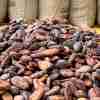‘Taylor Swift: The Eras Tour’ concert film breaks Disney+ records with 4.6 million views in three days
The Hindu
Taylor Swift's concert film, ‘Taylor Swift: The Eras Tour (Taylor’s Version)‘, breaks records on Disney+ with 4.6 million views.
Taylor Swift continues to reign supreme as her latest concert film, Taylor Swift: The Eras Tour (Taylor’s Version), shatters records on Disney+. In just three days since its release, the concert film amassed a staggering 4.6 million views, securing its position as the platform’s top music film of all time. Swifties around the globe contributed to a monumental 16.2 million hours of viewing over the weekend, a testament to the unwavering fervor of her fanbase.
The expanded edition of The Eras Tour features five bonus tracks, including the “Cardigan” from Folklore and four intimate acoustic renditions. Shot during the Eras tour’s electrifying performances in Los Angeles last August, the film captures Swift’s unparalleled stage presence and musical prowess.
Disney’s acquisition of the worldwide streaming rights reportedly cost over $75 million, an investment that has evidently paid off handsomely. Previously dominating the theatrical circuit with a global box office revenue of $261.7 million, Swift’s concert film now dominates the digital space, showcasing her indomitable appeal across various platforms.













